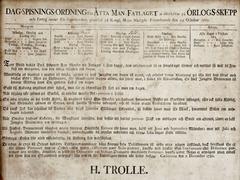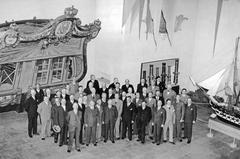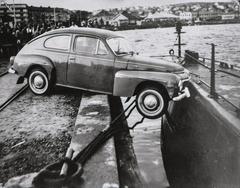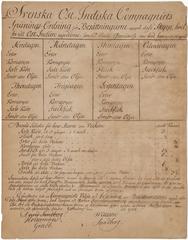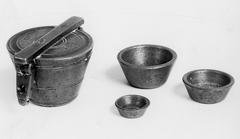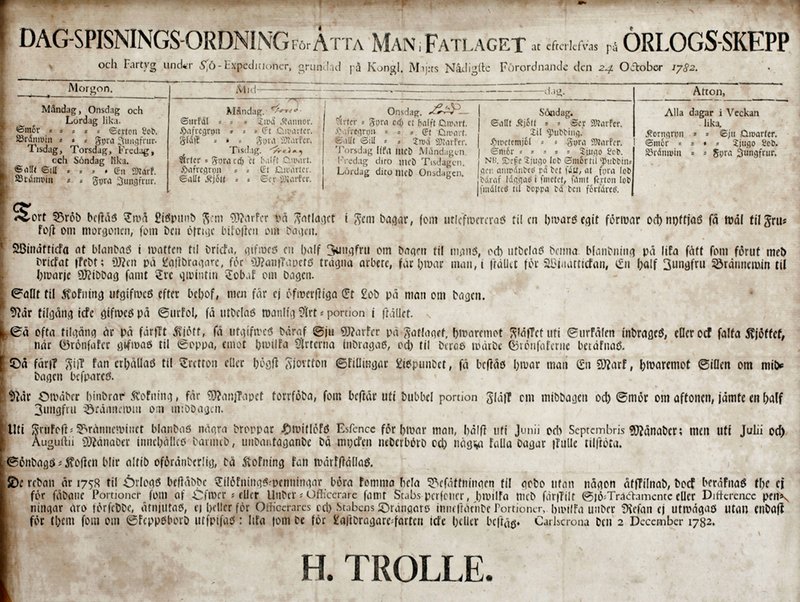
Maritime Museum Stockholm: Visiting Hours, Tickets, and Visitor Guide
Date: 14/06/2025
Introduction
The Maritime Museum in Stockholm (Sjöhistoriska museet) is a cornerstone of Sweden’s cultural and historical landscape, dedicated to preserving and presenting the nation’s maritime legacy. Established in the early 20th century, its foundation was driven by a nationwide effort to document Sweden’s longstanding relationship with the sea—a crucial aspect of national trade, defense, and identity (Sjöhistoriska Museet – Museum History). The museum’s striking neoclassical building, inaugurated in 1938, is itself a symbol of Sweden’s architectural and maritime traditions.
Housing approximately 50,000 artifacts, nearly a million photographs, and tens of thousands of ship drawings, the museum offers a comprehensive journey through Swedish naval power, merchant shipping, and coastal culture (DigitaltMuseum – Sjöhistoriska). Beyond its permanent and temporary exhibitions, the museum actively contributes to education and research, fostering a deeper understanding of Sweden’s maritime history and its ongoing significance (CEMAS). This guide provides detailed information on visiting hours, tickets, accessibility, exhibitions, educational programs, and practical tips to help you make the most of your visit (Sjöhistoriska Museet – Visit).
Table of Contents
- Early Development and Founding
- Architectural Significance
- Collections and Key Exhibits
- Role in Swedish Cultural Heritage
- Visitor Information: Hours, Tickets, Location, Accessibility
- Educational and Research Initiatives
- Partnerships and National Collaboration
- Visitor Experience and Amenities
- Visual Highlights
- Frequently Asked Questions (FAQ)
- Plan Your Visit: Tips and Resources
- References
Early Development and Founding
The idea for a maritime museum in Sweden was first put forward in 1913, leading to the opening of the initial museum space in 1914 at Skeppsbron 46, Stockholm (Sjöhistoriska Museet – Museum History). Early collections focused on merchant shipping, seamanship, and navigation, later expanding to include naval war artifacts. The museum’s scope was broadened in 1928 with new displays on Strandvägen, eventually culminating in the construction of the purpose-built museum in Gärdet, officially opened by King Gustav V in May 1938.
Architectural Significance
The museum occupies a prominent neoclassical building designed by Ragnar Östberg, also famed for Stockholm City Hall. Built between 1934 and 1935, the structure reflects both classical and subtle functionalist influences, with clean lines and bright surfaces (Sjöhistoriska Museet – Museum History). Its location in the Gärdet district, overlooking Djurgårdsbrunnsviken, provides scenic views and easy access to other major Stockholm attractions.
Collections and Key Exhibits
Permanent Collections
- Ship Models & Shipbuilding Artifacts: Explore thousands of meticulously crafted ship models, original blueprints, and the tools of Swedish shipwrights (WhichMuseum – Maritime Museum).
- Nautical Instruments & Navigation: View compasses, sextants, and marine charts that reveal the evolution of navigation. Interactive stations let visitors try handling replicas (Go City).
- Uniforms, Weapons & Naval Defense: Discover naval uniforms, cannons, torpedoes, and multimedia presentations about Sweden’s naval defense history.
- Maritime Art & Decorative Objects: Admire paintings, sculptures, and decorative arts, including figureheads and ship bells.
- Merchant Shipping & Trade: See shipping manifests, cargo samples, and sailors’ diaries, illustrating Sweden’s role in global trade.
Notable Thematic and Temporary Exhibitions
- Escape from the Baltics: Stories and artifacts from refugees crossing the Baltic during WWII (Go City).
- Shipping & Shopping: Examines the impact of maritime trade on Swedish consumer culture and sustainability.
- Rotating Exhibits: Focused on explorers, underwater archaeology, and maritime rescue—check the official website for current shows.
Interactive and Family-Friendly Features
From ship simulators and knot-tying stations to the “Children’s Ship” play area, the museum offers hands-on experiences for visitors of all ages. The museum also operates Båthall 2, a separate boat hall with historic boats from the 15th to 20th centuries (WhichMuseum – Maritime Museum).
Role in Swedish Cultural Heritage
The Maritime Museum is central to understanding Sweden’s seafaring history, shaped by its geography and the Baltic Sea. As part of the Swedish National Maritime and Transport Museums (SMTM), it collaborates with institutions like the Vasa Museum, Marinmuseum, and the Museum of Wrecks to present a holistic view of maritime life (DigitaltMuseum – Sjöhistoriska). The museum’s exhibitions and research address not only historical themes but also contemporary challenges, such as environmental threats to the Baltic Sea.
Visitor Information: Hours, Tickets, Location, Accessibility
Opening Hours
- Standard Hours (as of June 2025):
Tuesday–Sunday: 11:00–17:00
Closed Mondays and on major public holidays (SMTM)
Tickets and Admission
- Admission: Free for all visitors. Some special exhibitions or events may carry a separate fee.
- Where to Buy: No advance tickets necessary for general admission; check the official website for ticketed events.
Location & Directions
- Address: Djurgårdsbrunnsvägen 24, Djurgården, Stockholm
- How to Get There:
- Tram 7 to Nordiska museet/Vasamuseet or Djurgårdsbron
- Buses 69 and 76
- Ferries from Slussen
- Walking or cycling along scenic paths (tours-tickets.com)
Accessibility
- Fully wheelchair accessible, with lifts, ramps, accessible restrooms, and wheelchairs for loan.
- Tactile exhibits, hearing loops in the auditorium, and multilingual information available (routesnorth.com).
- Service animals are welcome.
Educational and Research Initiatives
The museum is a leading center for maritime research and education:
- School & Family Programs: Guided tours, interactive workshops, and children’s play areas designed to inspire curiosity (Sjöhistoriska Museet – Plan Your Visit).
- Extensive Nautical Library: Scandinavia’s largest, open to academics and the public (DigitaltMuseum – Sjöhistoriska).
- Research Partnerships: Collaboration with Stockholm University’s Centre for Maritime Studies (CEMAS), interdisciplinary projects like “Lost Navy,” and conservation programs (CEMAS, SMTM Research).
Educational resources, digitized archives, and public seminars keep the museum at the forefront of maritime scholarship.
Partnerships and National Collaboration
As part of SMTM, the Maritime Museum works closely with other Swedish and international institutions to share expertise, curate exhibitions, and advance research in maritime history (DigitaltMuseum – Sjöhistoriska). This enhances public engagement and ensures the preservation of Sweden’s nautical legacy across generations.
Visitor Experience and Amenities
Museum Layout and Atmosphere
A bright, spacious design by Ragnar Östberg encourages easy navigation and exploration. Exhibits are logically arranged with clear signage in Swedish and English.
Services
- Guided Tours & Audioguides: Available in several languages; check schedules at the information desk (tours-tickets.com).
- Museum Shop: Maritime-themed books, souvenirs, model ships, and unique gifts.
- Café: Fresh Swedish and international dishes, including vegetarian options, with park views (tours-tickets.com).
- Cloakroom & Lockers: Free cloakroom and coin-operated lockers for personal belongings.
Duration & Best Times to Visit
- Most visitors spend 1.5–2.5 hours; allow more for families or enthusiasts.
- Visit on weekday mornings or late afternoons for a quieter experience.
- The museum is less crowded than other major Stockholm attractions, making it ideal for families and budget travelers.
Visual Highlights
- Exterior of the Maritime Museum, showcasing anchor-shaped 1930s architecture (alt: Maritime Museum Stockholm exterior view).
- Detailed historic ship models (alt: Historic ship models at Maritime Museum Stockholm).
- Children engaging with interactive exhibits in the “Children’s Ship” area (alt: Kids at Maritime Museum interactive displays).
- Café with panoramic park views (alt: Café interior with park views at Maritime Museum Stockholm).
Frequently Asked Questions (FAQ)
Q: What are the Maritime Museum Stockholm visiting hours?
A: Tuesday–Sunday, 11:00–17:00; closed on Mondays. Always check the official website for updates.
Q: How much do tickets cost?
A: General admission is free. Special exhibitions or events may require a ticket.
Q: Is the museum suitable for families and children?
A: Yes, with interactive exhibits, play areas, workshops, and family-friendly trails.
Q: Is the museum wheelchair accessible?
A: Yes, with accessible entrances, lifts, restrooms, and wheelchairs available for loan.
Q: Can I take photos inside?
A: Non-flash photography is allowed; check for restrictions in certain galleries.
Q: What other attractions are nearby?
A: The Vasa Museum, Nordic Museum, Skansen, and ABBA The Museum—all within walking distance (whichmuseum.com).
Plan Your Visit: Tips and Resources
- Check the Website: For current exhibitions, events, and any schedule changes (Sjöhistoriska Museet – Plan Your Visit).
- Combine Visits: Take advantage of the museum’s proximity to other Djurgården attractions.
- Public Transportation: Djurgården is easily accessed by tram, bus, ferry, or on foot.
- Family-Friendly: Free admission and interactive exhibits make it ideal for families.
- Photography: Permitted without flash, unless otherwise indicated.
For the latest information, download the Audiala app for guided tours and exclusive content, and follow the Maritime Museum on social media for news and updates.
Summary & Final Tips
The Maritime Museum Stockholm encapsulates Sweden’s enduring maritime spirit through world-class collections, educational programs, and accessible facilities. Its picturesque Djurgården location makes it a perfect starting point for exploring Stockholm’s cultural treasures. Whether you’re captivated by historic ship models, interested in naval history, or seeking a family-friendly adventure, the museum offers a memorable and informative experience. Plan ahead by checking visiting hours and exhibitions, and enrich your visit using digital resources and guided tours (SMTM Research).
References
- Sjöhistoriska Museet – Museum History
- DigitaltMuseum – Sjöhistoriska
- WhichMuseum – Maritime Museum Stockholm
- Go City – National Maritime Museum Stockholm
- SMTM Research
- CEMAS – Centre for Maritime Studies
- Sjöhistoriska Museet – Plan Your Visit
- Stockholm Museum Guide
- Vasa Museum, Vrak Museum of Wrecks – Tours-Tickets
- Routes North – Vasa Museum
- SMTM – Museums and Collections
- WhichMuseum – Best Museums in Sweden
- Wikipedia – Maritime Museum (Stockholm)
